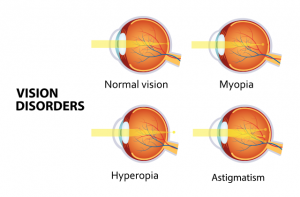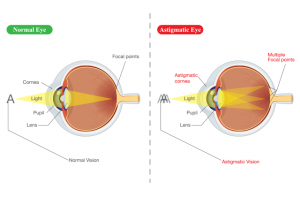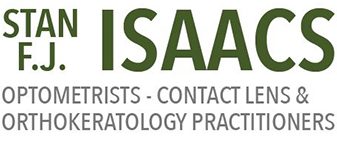
There are 3 categories of refractive error: Myopia (short-sightedness), Hyperopia (long-sightedness) and Astigmatism. They are due to errors in the refraction (bending) of light that comprises human sight. In emmetropia, the term for normal vision, light enters the eye and is refracted through several medium before focusing perfectly on the retina’s surface. The clear image from the retina will then be transmitted to and processed by the brain. The major influencers of light reaching the retina, properly focused at the precise distance, are the cornea’s curvature, the thickness of the lens, and the length of the eye.
In the case of a refractive error, one or more of the three factors affect distance or refraction. The focus point may therefore end up in front of (myopia), beyond (hyperopia), or at two different points on the retina (astigmatism).
In Hyperopia, a person will have good distance vision, but close work will present focusing difficulties. At a young age, the mechanics of the eye will subconsciously adjust the lens to compensate for the shortness of axial length (the length of the eyeball), allowing the person to see clearly. However, this may produce consistent headaches, and the automatic corrective ability will diminish as they age and lose lens elasticity.
In Myopia, usually due to abnormally long axial length, parallel light will be refracted and end up focused prior to reaching the retina. Myopes will be able to see near objects, but not those at a distance. Unlike in hyperopia, there is no automatic compensatory adjustment and distant vision will be blurred. In order to see, an undiagnosed myopic will tend to squint at distant objects which affects the shape of the eye and narrows focus, slightly improving image clarity.

Astigmatism often occurs simultaneously with myopia or hyperopia, meaning abnormal axial length. Aside from axial length affecting the distance of the focus point from the retina, the determinant of the mixed focus points of astigmatism is irregularities in the cornea’s surface that causes blurred and distorted vision. To put it simply, you can imagine an astigmatic cornea is oval shaped like a rugby ball, with one meridian longer than the other, instead of symmetrically round shaped in cases of a spherical cornea.








